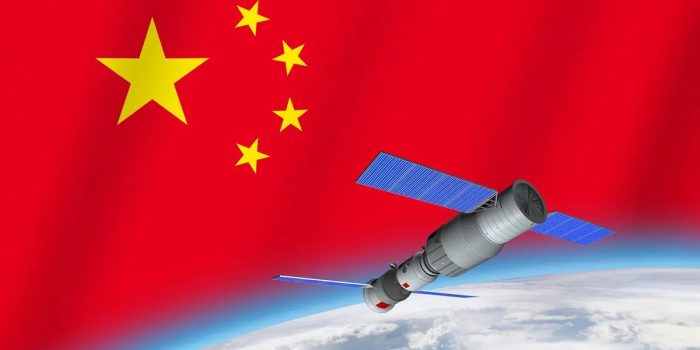The China Aerospace Studies Institute recently released a report highlighting the People’s Liberation Army’s (PLA) adaptation of military doctrine and training methods based on learned lessons. A defense contractor demonstrated a space fuel tanker in geosynchronous Earth orbit (GEO), indicating China’s advancements in space capabilities.
The report notes that the Chinese Communist Party (CCP) has allowed new commercial entities to enter the space sector, aiming not just to provide technology but also to shape international norms. These developments, though often overlooked, could aid the PLA in sustaining on-orbit space operations during wartime. Since 2018, the PLA has been developing a computer simulation program to train military satellite operators in space-based refueling.
“The simulation tool is in use, but probably still in development. The PLA’s National University for Defense Technology (NUDT) in 2022 criticized existing development efforts for not examining how much fuel is required to carry out particular servicing missions, after the servicing satellite reached the customer,” the new report revealed.

A Strategic Support Force (SSF) unit in Beijing published an article in 2018 outlining the PLA’s need for a simulation tool for training in space-based refueling. The PLA’s National University for Defense Technology (NUDT) criticized existing development efforts in 2022 for lacking specific fuel and time parameters needed for satellite servicing missions.
China’s initiatives in on-orbit servicing are evident in its role in constructing the Chinese Space Station and the inclusion of such activities in the Ministry of Science and Technology’s development plans since 2016. Chinese companies like Intersteller Walk have entered the satellite development sector, signing launch deals with commercial launch companies.

The US intelligence community is aware of China’s progress in on-orbit servicing, which could have dual-use capabilities as counter-space weapons. However, Chinese official media have stated that satellites with robotic arms are for testing debris observation and mitigation technology. Chinese publications in English also outline their plans for international cooperation and negotiation on in-space servicing.
Regarding concerns about transparency, perceptions vary culturally, and regular discussions can enhance understanding. Chinese official documents in English and publications outlining international cooperation efforts suggest an interest in open dialogue.
China’s advancements in space capabilities, particularly in on-orbit servicing, reflect both military and civilian initiatives. While concerns about potential weaponization exist, efforts toward transparency and international cooperation signal an interest in constructive engagement in space activities.


